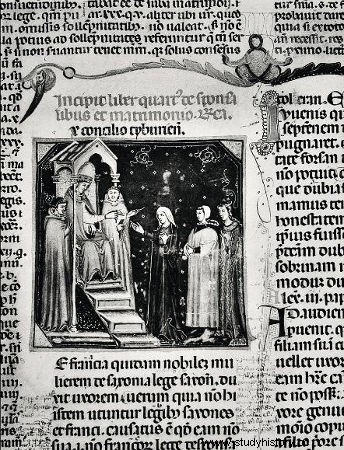
By Me. Cláudio Fernandes
The institution called Inqusitio haereticae pravitatis , better known as Inquisition , was created by Pope Gregory IX , in 1233, through the bull Licet ad capiendos . The history of the Inquisition is one of the topics that most generate discussion, both among specialists in the subject and among the non-specialized public. This is due to the confusion and lack of knowledge about the purposes of this institution, as well as the lack of reasonable understanding of the context in which it was created. To understand well what the Inquisition was in the Middle Ages, it is necessary to know a little about the proliferation, in the Late Middle Ages, of a heresy called Catharism .
Catharism (a term of Greek origin meaning "pure") was heir to elements of Gnosticism ancient and, therefore, preached the existence of two gods, a good god and an evil god. For the Cathars, the entire material world created, including the human body, was the fruit of the evil god's action, hence the corruptibility of time and the fateful fate of death. For his part, the good god would have created the spirit of men, which, when freed from the flesh, returned to its purity. The Cathars identified Christ as this good god. It so happens that this type of Catharist belief produced serious implications of a social order. An example was the fact that the Cathars were opposed to the idea of having children, as they believed that such a practice was nothing more than giving a pure spirit the “prison of the flesh”.
The most famous Catharist sect was the Albigensians , which was organized in a complex way and attracted thousands of supporters. For Catholic dogmatics, the practice of Catharism was seen as a very serious problem, given that the Trinity was denied. (the three divine persons, Father, Son and Holy Spirit) and, consequently, the humanity of Christ, that is, the human, carnal part of God made Son. One of the serious consequences that the action of the Albigensians and other Catharists aroused was popular persecution, which resulted in small wars, lynchings, etc. The first significant measure against this situation was taken in 1148, when the Synod of Verona was convened. , commanded by Pope Lucius III and by the Holy Emperor Frederick Barbaroxa .
However, the conflicts between Cathars and Christians took on greater proportions in the following decades, and the sect progressively gained more adherents. The PopeInnocent III , who took up his duties as Peter's successor in 1189, took the first most drastic measures against Catharism, such as excluding heretics from public office and confiscating their property. Furthermore, it was with the authorization of Innocent III that the Crusade against the Albigensians was created. to fight the Cathars, who, thanks to their great organization, also had an army.
After this period of turmoil in the twelfth century, in the following century, the practice of the Cathar heresy still persisted, in many cases not explicitly, so that it was necessary that the Church found a court of judicial inquiry, an investigative court, in order to certify whether the accused of heresy was in fact a heretic. This is how Pope Gregory IX created the Holy Inquisition in 1233. Contrary to popular belief, the Inquisition did not kill millions of people in the Middle Ages or in the Modern Age – when it took on a more violent bias in the Iberian States, due to its secular instrumentalization.
The case of torture, which was authorized by Pope Innocent IV through the leaflet Ad extirpanda (which aroused many discussions, given that the pope claimed for the Church characteristics of imperial power), is also overestimated by some authors who wrote about the Inquisition. Torture was used in very specific cases and was by no means a common practice for all inquisitors, as historian Regine Pernoud points out in her book “Light on the Middle Ages”, which talks about deaths and tortures. during the medieval Inquisition:
“Of the nine hundred and thirty convictions produced by Inquisitor Barnard Gui during his career, forty-two in all led to the death penalty. As for torture, in the entire history of the Inquisition in Linguadoque there are only three certain cases in which it was applied; is to say that its use was nothing less than general. It was necessary, on the other hand, for it to be applied, that there should be a beginning of the test; it could only serve to complete confessions already made. Let us add that, like all ecclesiastical courts, the Inquisition's court ignores preventive detention and leaves the accused at liberty until proof of their guilt is presented. [1]
It is also worth noting that whoever executed the condemned heretic was not the Church, but the civil authority, the secular power, to which he was entrusted.
NOTES
[1] PERNOUD, Regine. Light on the Middle Ages . trans. António Manuel de Almeida Gonçalves. Mem Martins:Publications Europe – America, 1997. p. 90-91.
Take the opportunity to check out our video lesson related to the subject:
